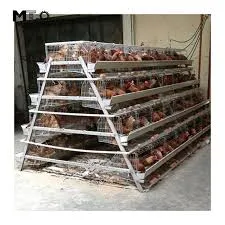Efficient Pellet Cattle Feed Production Equipment for Sustainable Livestock Farming
Aug . 17, 2024 13:38 Back to list
Efficient Pellet Cattle Feed Production Equipment for Sustainable Livestock Farming
The Importance of Pellet Cattle Feed Machines in Modern Agriculture
In the realm of modern agriculture, the efficiency and sustainability of livestock farming are paramount. One crucial advancement that has transformed the feeding of cattle is the development of pellet cattle feed machines. These machines not only enhance the nutritional intake of livestock but also optimize the overall feeding process, significantly impacting productivity and profitability for farmers.
What is a Pellet Cattle Feed Machine?
A pellet cattle feed machine is a specialized piece of equipment designed to convert raw feed ingredients into compressed pellets. These pellets are designed to be easily digestible and packed with nutrients, making them an essential component of modern cattle feed. The process involves grinding raw materials such as grains, vitamins, and minerals, mixing them together, and then using heat and pressure to form pellets. This method not only improves feed efficiency but also reduces feed waste, promoting a more sustainable farming practice.
Benefits of Using Pellet Feed
1. Enhanced Nutritional Value Pellet feed machines allow for the precise formulation of cattle feed, ensuring that livestock receive a balanced diet. High-quality pellets are produced that contain the right proportions of carbohydrates, proteins, vitamins, and minerals essential for cattle health and growth.
2. Improved Feed Conversion Ratio The compact and uniform nature of pellets means that cattle can consume feed more efficiently. Studies show that livestock fed with pellets often have a better feed conversion ratio, leading to faster weight gain and reduced feeding costs.
pellet cattle feed machine

3. Reduced Waste Traditional feeding methods can lead to significant feed wastage as loose feed may be spilled or left uneaten. Pellets, on the other hand, minimize waste due to their compact size and palatable formulation, thus maximizing the use of the feed produced.
4. Easier Storage and Handling Pellets are easier to store and handle compared to loose feed. They take up less space and can be easily transported, reducing logistical challenges for farmers. This is particularly beneficial for large-scale operations where efficiency is critical.
5. Improved Animal Health The controlled manufacturing process of pellet feed helps to eliminate harmful pathogens and molds that can often be present in raw feed ingredients. This contributes to better overall health and productivity of the cattle, ultimately leading to higher-quality beef and dairy products.
The Role of Technology
The advancement of technology in pellet cattle feed machines has led to the development of more efficient and user-friendly models. Modern machines come equipped with features such as automated control systems, energy-efficient motors, and enhanced safety measures. This technological innovation not only improves production efficiency but also reduces the labor required for feed preparation, allowing farmers to focus on other critical areas of their operations.
Conclusion
The adoption of pellet cattle feed machines is revolutionizing livestock farming practices. By providing enhanced nutrition, improving feed efficiency, and reducing waste, these machines are enabling farmers to operate more sustainably and profitably. As the global demand for beef and dairy products continues to rise, investing in pellet cattle feed machines represents a crucial step toward meeting this demand while promoting sustainable agricultural practices. Embracing this technology is not just a choice for farmers; it is a necessity for the future of agriculture.
-
High Performance Exhaust Fan – Efficient Ventilation Solutions for Home
NewsJun.10,2025
-
High-Quality Gestation Pen for Sows Durable Mobile Pig Pen & Simple Pig Pen Solutions
NewsJun.10,2025
-
High Quality Rabbit Cage Double Tier Designs & Welded Wire Mesh Supplier
NewsJun.10,2025
-
Floating Fish Feed Machine - High Efficiency Floating Fish Feed Extruder for Small Scale Production
NewsJun.10,2025
-
Premium Poultry Housing Solutions Mobile & Commercial Free Range Options
NewsJun.10,2025
-
Industrial FRP Fans Corrosion-Resistant Blades & Centrifugal Systems
NewsJun.09,2025






